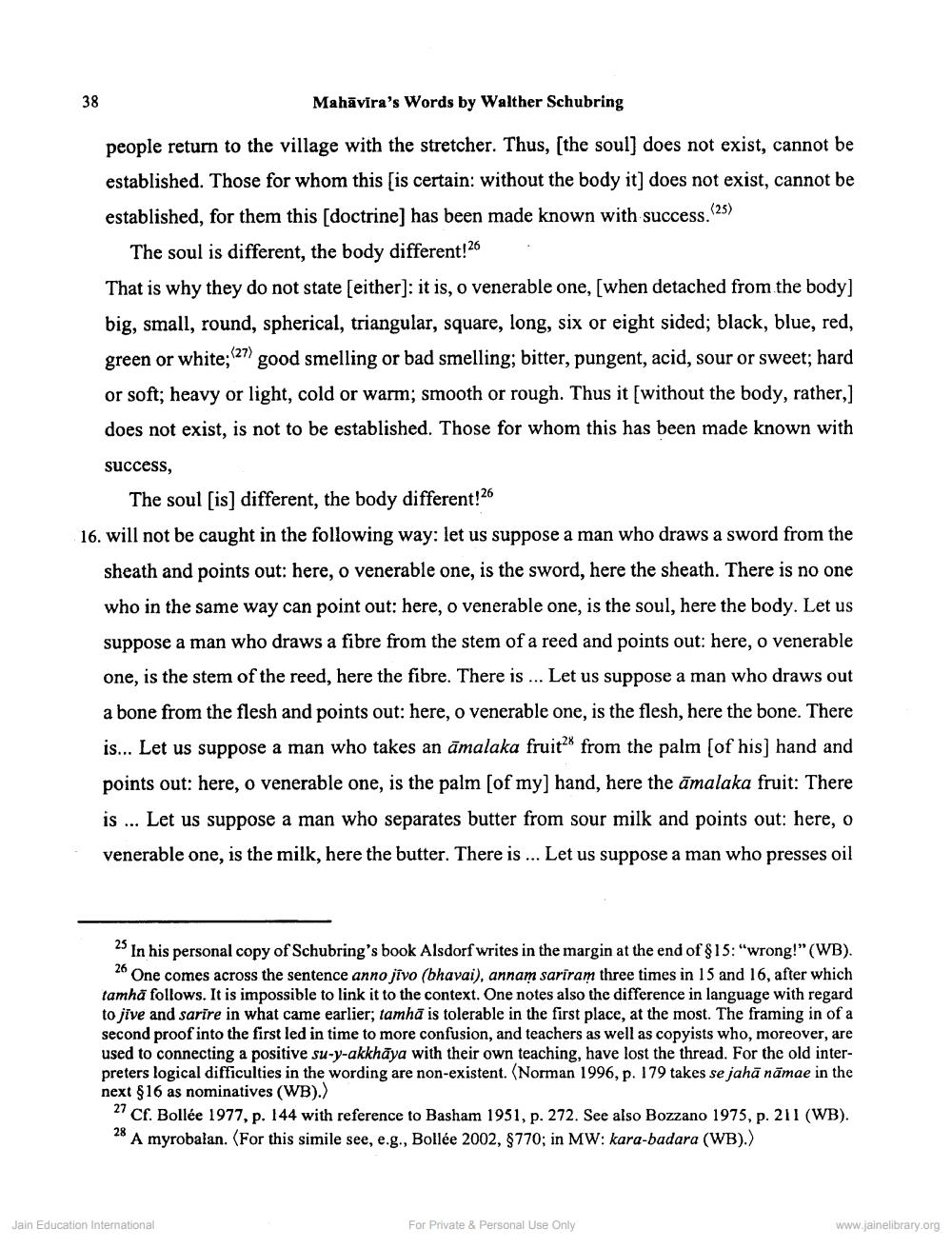________________
Mahāvīra's Words by Walther Schubring
people return to the village with the stretcher. Thus, (the soul) does not exist, cannot be established. Those for whom this is certain: without the body it] does not exist, cannot be established, for them this doctrine) has been made known with success. (25)
The soul is different, the body different!26 That is why they do not state (either): it is, o venerable one, (when detached from the body] big, small, round, spherical, triangular, square, long, six or eight sided; black, blue, red, green or white; (27) good smelling or bad smelling; bitter, pungent, acid, sour or sweet; hard or soft; heavy or light, cold or warm; smooth or rough. Thus it (without the body, rather,] does not exist, is not to be established. Those for whom this has been made known with success,
The soul (is) different, the body different!26 16. will not be caught in the following way: let us suppose a man who draws a sword from the
sheath and points out: here, o venerable one, is the sword, here the sheath. There is no one who in the same way can point out: here, o venerable one, is the soul, here the body. Let us suppose a man who draws a fibre from the stem of a reed and points out: here, o venerable one, is the stem of the reed, here the fibre. There is ... Let us suppose a man who draws out a bone from the flesh and points out: here, o venerable one, is the flesh, here the bone. There is... Let us suppose a man who takes an āmalaka fruit from the palm (of his) hand and points out: here, o venerable one, is the palm (of my] hand, here the āmalaka fruit: There is ... Let us suppose a man who separates butter from sour milk and points out: here, o venerable one, is the milk, here the butter. There is ... Let us suppose a man who presses oil
25 In his personal copy of Schubring's book Alsdorf writes in the margin at the end of $15: "wrong!”(WB). 26 One comes across the sentence annojivo (bhavai), annam sariram three times in 15 and 16, after which tamhă follows. It is impossible to link it to the context. One notes also the difference in language with regard to jive and sarire in what came earlier; tamhā is tolerable in the first place, at the most. The framing in of a second proof into the first led in time to more confusion, and teachers as well as copyists who, moreover, are used to connecting a positive su-y-akkhāya with their own teaching, have lost the thread. For the old interpreters logical difficulties in the wording are non-existent. (Norman 1996, p. 179 takes se jahā nāmae in the next $16 as nominatives (WB).)
2 Cf. Bollée 1977, p. 144 with reference to Basham 1951, p. 272. See also Bozzano 1975, p. 211 (WB). 28 A myrobalan. (For this simile see, e.g., Bollée 2002, $770; in MW:kara-badara (WB).)
Jain Education International
For Private & Personal Use Only
www.jainelibrary.org




